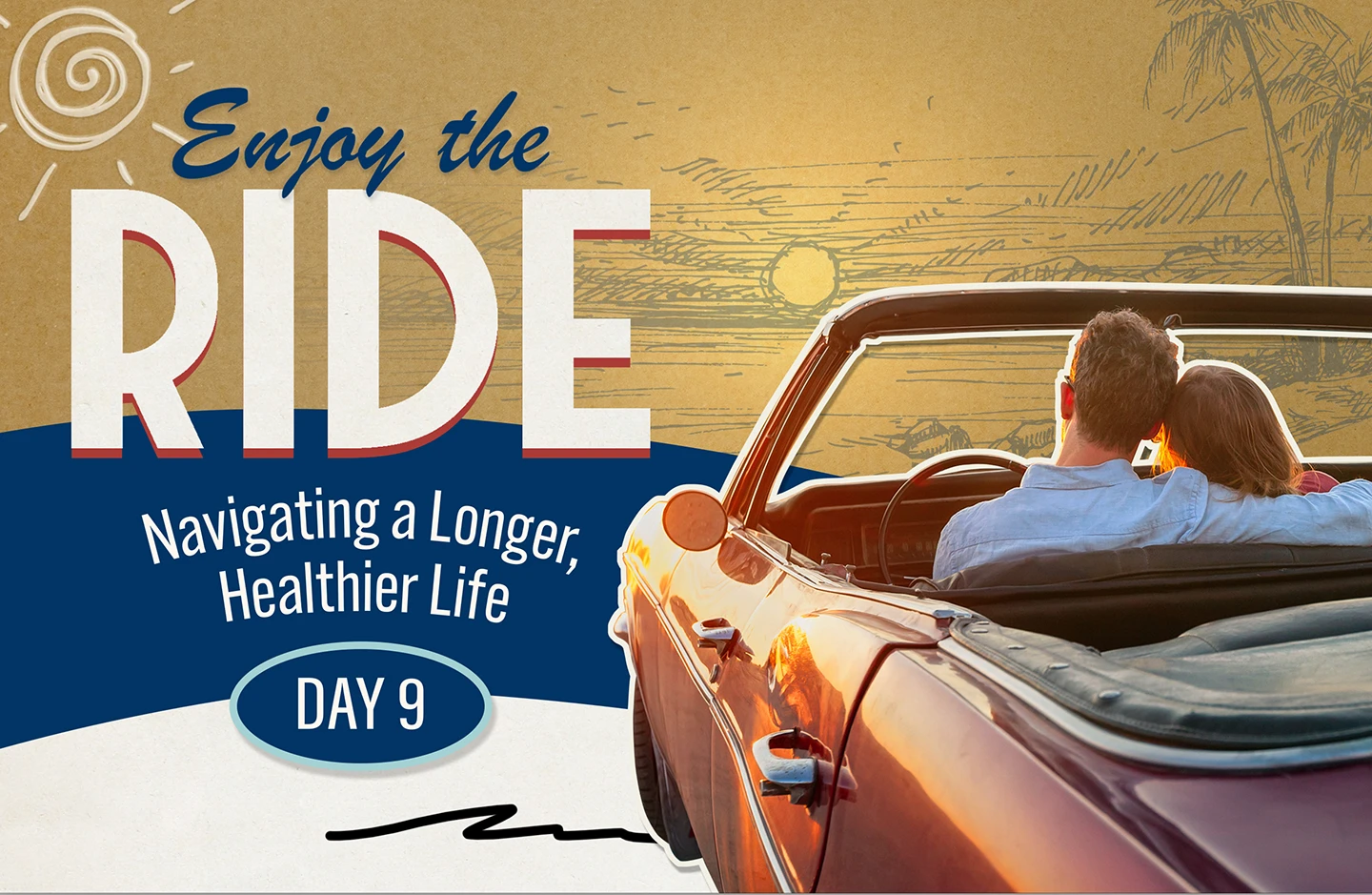
Day 9: Keeping Your Frame Strong
Knocking, rattling, clunking, and unsteadiness are a few ways we might describe a car that’s seen better days. And it’s not exactly the vehicle we want to use for a road trip, is it?
We often describe our aging bodies in similar ways. We lament our aching bones, joint “wear and tear” and even the strange noises our frames make—whether those are creaks, pops or clicks. Still, an aching back or stiff knees isn’t something we have to accept as inevitable on the road to longevity, despite the prevalence of musculoskeletal conditions.
Over 21% of Americans battle arthritis, and as many as 50% experience pain in their lower back, knees and necks. In fact, it’s so common that the National Institutes of Health reports that musculoskeletal conditions account for up to 40% of all primary care visits, and around 80% of adults will experience back pain in their lifetimes.
These bumpy patches in our health can be caused by age and repetitive motions that weaken our bodies over time, but other factors are also at play. Physical inactivity, poor nutrition, smoking, overuse of alcohol, being overweight, family history, stress and lack of sleep also can lead to weakened muscles and bones, stiffness and slower healing times. In addition, chronic conditions like arthritis, diabetes, kidney disease and osteoporosis also contribute to muscle and bone weakness.
However, a faulty frame isn’t just about the pain it can cause—it also can rob you of your independence and limit your mileage. Musculoskeletal conditions are the leading cause of disability in the United States and significantly increase the risks of falls and fractures.
Among older adults, the most common fracture is of the hip, which can pose a significant problem when it comes to your lifespan. Hip fractures are linked to a 25% mortality rate risk in the year after the incident, but that number spikes to 70% if the injury goes untreated.
So, how can we map a better future for our bodies and keep our frames strong?

One study that followed people 80 and older for six years found that superagers had better mobility and could stand from a chair faster than their typically aged counterparts. Researchers believe it’s not just because they move more but because they engage in more physically demanding activities like gardening or climbing stairs.
The study also found that faster movement was associated with better memory, improved cognition and lower risk of diseases that affect the brain—such as obesity, insulin resistance, heart disease and hypertension. The even better news is that a healthy brain also increases our ability to move.
One way to keep our muscles and bones strong is to emulate what superagers do when in the driver’s seat. That means maintaining muscle mass if you can, as it’s harder to put muscle mass back on after you lose it. Incorporating at least two days of strength training into your exercise regimen is a good way to do that.
The Office of Disease Prevention and Health Promotion recommends four to six exercises that engage as many muscle groups as possible (ex. abdomen, arms, back, chest, hips, legs and shoulders) using high reps but low weight. Not only can this make you stronger and slow bone loss, but a review of studies showed that muscle training can reduce cancer, diabetes, heart disease and mortality risks by up to 20%.
A study in Nutrients suggests people 65 and older may also need more protein than the typical guidelines to reduce the risk of muscle loss. While the recommended daily intake for people younger than 65 is .8 grams of protein per kilogram of body weight, older adults may need 1.2 to 2 grams of protein instead. For a 165-pound person, this translates to 2.6 to 3.2 ounces of protein daily—the equivalent of two eggs, three ounces of fish, Greek yogurt and half a cup of lentils per day.
However, we also have other ways to detour around musculoskeletal conditions with today’s tips.

Every day during the series, we'll share a few tips for a healthier journey. Whether you've drifted off track, need a tune-up or want to stay on course, we can help.

Getting Back on the Road
Like Jackson Browne sang, you can’t get where you’re going if you’re running on empty. That’s why fueling your body with foods that support muscle, bone and joint health is important. So, “gas up” on plenty of calcium, vitamins D and K, magnesium and omega-3 fatty acids in your diet. Some examples of what to add to your diet are leafy greens, dairy, nuts, seeds, fatty fish and the fortified foods we discussed yesterday.

Tune-Up
You may have your nutrition locked in when it comes to musculoskeletal health, but what are you wearing on your feet? Like driving on bald tires, not having supportive footwear can lead to reduced traction, a higher risk of injuries, poor alignment and other problems. So, consider investing in supportive shoes with good arch support and cushioning to improve your stability while easing pressure on your joints.

Cruise Control
You’ve found the perfect sneakers, have your diet dialed in and are trucking right along. That’s incredible! Just remember, you want to change up which exercise roads you’re traveling on, and be mindful of any pain or stiffness you might be experiencing. While it’s good to alternate between cardio and resistance training, don’t overwork your frame! If you’re hurting, take a break and talk to your doctor. Then, when you ease back into it, consider low-impact activities like stretching, swimming and cycling.


